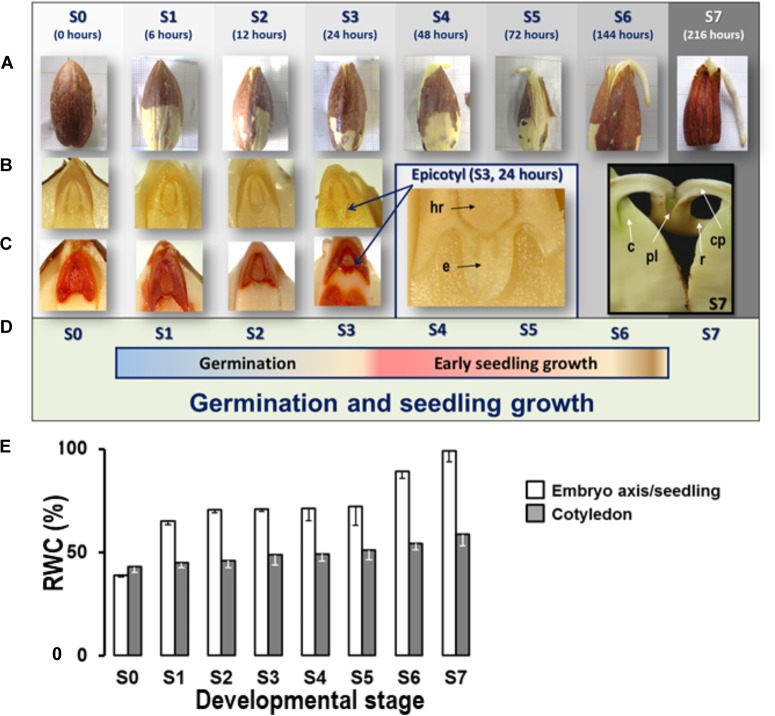FIGURE 1.
Morphology and physiology of Quercus ilex seeds germinating at different developmental stages. (A) Morphology of germinating acorns and young seedlings at each developmental stage; the relative time taken for low hydrated seeds to reach each stage is also shown; germinating dehulled seeds shows important morphological changes after imbibition at S2: testa rupture at 12 h of germination. S3: radicle emergence at 24 h; S5: epicotyl emergence from the embryonic axis; and S6: plumule emergence from differentiated cotyledonary petioles. (B) Seed sections showing the embryonic axes and the progressively differentiated parts of the embryo: hr, hypocotyle radicle; e, epicotyl; pl, plumule; c, cotyledon; cp, cotyledonary petiole; r, radicle; (C) TZ staining was used to facilitate the visualization of the morphological changes produced in the embryonic axes during germination. (D) Correspondence among the eight developmental stages and the phases of Q. ilex seed germination and seedling growth: germination (S0–S3) and early seedling growth (S4–S7). (E) Percentage of relative water content (RWC %) of complete germinating Q. ilex seeds or their cotyledons at the different developmental stages. The fresh (FW) and dried (DW) weights (70°C for 48 h) of 10–15 germinating acorns or seedlings were plotted per stage, with vertical bars representing ± SE of the mean. All mass measurements were made using an analytical scale, with precision of 0.0001 g. The relative water content (RWC) in germinating seeds was expressed as percentage of lost weight [(FW–DW) × 100] relative to fresh weight (FW). All values were rounded to the nearest milligram.

